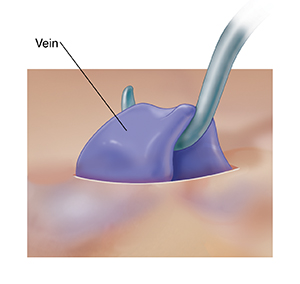Surgery for Varicose Veins
If you have large varicose veins, surgery may be the best choice. But it will not prevent new varicose veins from forming. Surgery is most often done in a hospital or surgery center as an outpatient.
Varicose vein surgery
Your surgery will be tailored to your needs. Varicose veins may be tied off (ligation), destroyed, or removed. Blood will then flow through the healthy veins. One or more of the following techniques may be used:
Vein stripping and ligation
In more severe cases, the surgeon may tie off and remove veins by making smaller cuts in the skin. Smaller branching veins may also be tied off or removed.
Microphlebectomy or ambulatory phlebectomy
A special hook is used to gently take out a varicose vein through tiny incisions. Microphlebectomy may be done in your healthcare provider’s office.

Sclerotherapy
Your healthcare provider will inject the varicose vein with a special chemical that will quickly close the vein from the inside. This is particularly useful for smaller veins.
PIN stripping
All or part of the vein may be removed with a stripping instrument.
Ablation (laser or radiofrequency)
A tiny cut in the skin is made near the varicose vein. A small tube called a catheter is inserted into the vein. Energy or heat released from the catheter tip will make the vein walls collapse and stick together, stopping all blood flow through the vein.
Know about the risks
Your healthcare provider will talk with you about the risks of surgery. These include:
-
Bleeding or swelling
-
A sense of numbness, burning, or tingling in areas near the procedure
-
Edema or swelling in the legs
-
Clots in the deep veins that may travel to the lungs
-
Infection
-
Scarring